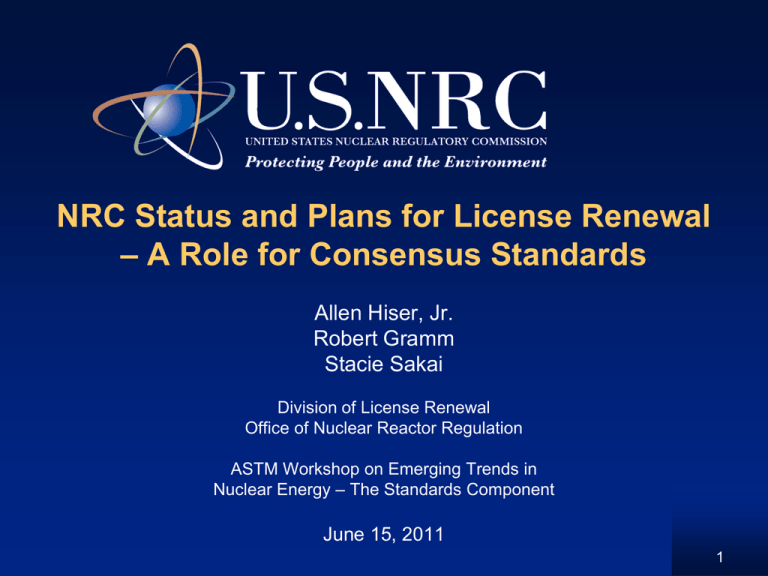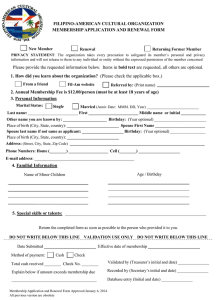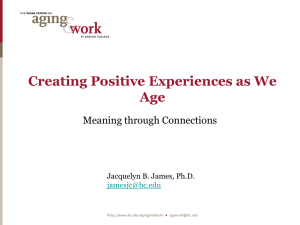NRC Status and Plans for License Renewal
advertisement

NRC Status and Plans for License Renewal – A Role for Consensus Standards Allen Hiser, Jr. Robert Gramm Stacie Sakai Division of License Renewal Office of Nuclear Reactor Regulation ASTM Workshop on Emerging Trends in Nuclear Energy – The Standards Component June 15, 2011 1 OUTLINE • Description of License Renewal • Subsequent Renewal • Technical Issue Areas • Conclusions 2 Nuclear Power Plant Licensing Atomic Energy Act Plants licensed to operate for 40 years Allows for license renewal Regulatory Process (10 CFR Part 50) Regional inspections Safety issue resolutions Plant specific issue resolutions Materials aging & degradation issues important to safety are addressed in a variety of ways Rule changes Generic communications Orders Voluntary actions 3 License Renewal Rule – 10 CFR Part 54 License Renewal Rule – 10 CFR Part 54 Renewal for up to 20 years (e.g., 40 to 60 years) Can apply 20 years before license expiration per 54.17(c) Must apply at least 5 years before expiration per 2.109(b) A renewed license may be subsequently renewed per 54.31(d) No restrictions on number of subsequent renewals or changes in requirements Focus is on managing the effects of aging of long-lived, passive structures and components important to plant safety – aging management programs (AMPs) Other aspects of original license are not reconsidered “A program based solely on detecting structure and component failures is not considered an effective aging management program” 4 License Renewal Safety Principles The ongoing regulatory process is adequate to ensure the safety of currently operating plants The same plant operating rules apply during the renewal term Requires additional actions for aging management of passive, long-lived plant structures and components for license renewal 5 License Renewal Process Submittal of Application - Integrated Plant Assessment Aging management review Aging management programs Time-limited aging analyses Safety Review Regional Inspection Advisory Committee on Reactor Safeguards Environmental Review (10 CFR 51) Hearing Opportunity Agency Decision Regional Inspection before end of 40 years 6 License Renewal Status 104 operating reactors in the U.S. 69 PWRs 35 BWRs Renewed licenses issued for 66 units at 39 sites Reviewing applications for 16 units at 11 sites 9 plants have entered their 41st year of operation; first was in April 2009 10 cumulative reactor-years beyond 40 7 Industry Considering Subsequent Renewals • Anticipate first submittal(s) in 2015 to 2019 ?? • Industry has lead role to submit applications and identify resolution of technical issues • NRC looking at need for changes to regulatory processes, and evaluating both guidance and regulations – Including technical issues (safety and environmental) 8 NRC Tasks on Subsequent Renewal Hold NRC/industry workshops on operating experience and industry research activities Develop an expanded materials degradation assessment To identify material, environment and aging effects combinations Assess results from implementation of Aging Management Programs Share expertise - domestic and international Only the first phase to develop a comprehensive basis for license renewal beyond 60 years 9 Subsequent License Renewal Focus Areas Technical issues Guidance documents for operation to 80 years License renewal application (LRA) characteristics 107 Technical Issue Concerns Activities looking at identification of potential new aging phenomena – locations, forms, severity Known mechanisms that could become more active – incubation times, activation energies, late blooming phases New phenomena Approaches for identifying potential aging phenomena Workshops with industry and international colleagues Expanded materials degradation assessment (EMDA) Results from 1st renewal aging management programs Both “one-time” and periodic programs Relevant domestic and international operating experience It is difficult to simulate 80 years of aging when oldest plants are just over 40 years old 8 Technical Issue Areas Adequacy of aging management programs (AMPs) – need new or enhanced AMPs ? Considering phenomena of concern Assess performance of 1st renewal aging management programs Inspection methods, accessibility, frequency How to address primary limiting items Reactor pressure vessel integrity Degradation and integrity of structures Cable aging 9 Guidance / Application Process Guidance Develop Generic Aging Lessons Learned report applicable for operation up to 80 years Develop Standard Review Plan applicable to LRAs for operation up to 80 years Revision to industry guidance? LRA Format changes needed ? Self assessment of AMP effectiveness ? Public involvement and input Workshops – starting this fall 13 AMP Effectiveness Audits Review both one-time and periodic AMPs Assess findings – unanticipated or expected degradation found, or confirm no degradation Accessibility issues, adequacy of methods Trending information (mainly existing programs) First plants – Ginna and Nine Mile Point Bottom line – Evaluate effectiveness of AMPs and enable an assessment of the need for new or enhanced AMPs to address subsequent renewal 14 Workshops on Subsequent Renewal • February 19-21, 2008 - Joint NRC/DOE Workshop on U.S. Nuclear Power Plant Life Extension Research and Development Long-Term Reliability Observations Aging Management Observations New Technologies Observations February 22-24, 2011 – 2nd Joint Workshop Industry presentation focus was on plans and roadmaps New technical information was sparse 12 Reactor Vessel Embrittlement • Improvements to embrittlement correlations, particularly incorporation of high fluence data (>5x1019n/cm2) • More accurate flaw distribution models for RPV materials to support risk informed P-T limit calculations – NDE improvements (EPRI/ASME) • Surveillance Programs – Improve guidance for coordinated/integrated programs and sister plant data (ASTM) – Accelerate generation of high fluence data • Evaluation of nozzles as limiting components for P-T limits (ASME) Reactor Vessel Internals • In-situ test methods for estimating fracture toughness and void swelling of stainless steels • IASCC resistant materials – e.g., for replacement bolting Electrical Cable Submergence • Issues – Audits identify underground cables subject to wet environment – Validity of Environmental Qualification (EQ) for subsequent renewal operating period • Status – Inspection program to verify that licensees are maintaining cables dry – NRC improving electrical testing guidance – EQ needs to be addresses 18 Electrical Cable Submergence 19 Concrete Issues • Issue – Cracks and spalling create integrity concerns – Alkali-silica reaction • Status – Enhanced commitments for examinations and criteria for repair 20 Concrete Degradation Core Drill Cracks with Gel Like Material 21 Conclusions • Licenses have been renewed for 2/3 of plants • Subsequent renewal challenges – NRC assessing need for changes to regulatory processes – Resolution of technical issues by industry is critical to enable acceptable applications for subsequent renewal • Industry must take an active lead to develop resolutions to technical issues – Adequate understanding of degradation mechanisms – Sufficiency of aging management approaches • NRC will evaluate acceptability of proposed resolutions • Codes and standards can provide key support – Criteria for acceptability of aged components – Standardization of test methods and analysis procedures to address a variety of technical issues 22







